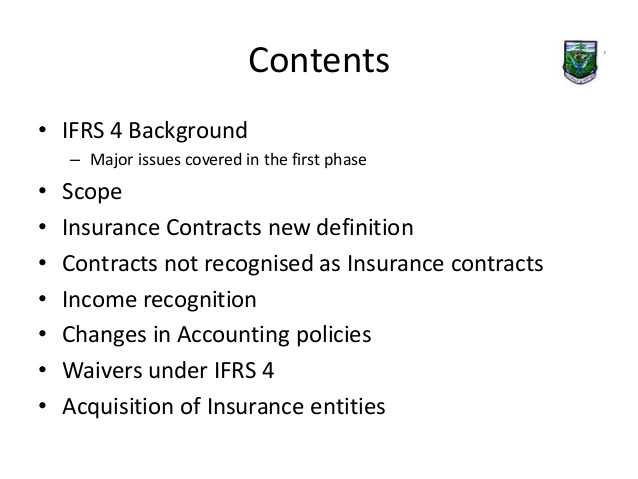
The multi-step income statement provides detailed reporting of your company’s revenues and expenses using multiple steps to arrive at net income. Multi-step income statement items include revenue, cost of goods sold, and expenses, which are calculated to arrive at net income. The statement shows the line items gross profit and operating income, which are metrics commonly looked at by management, investors, and creditors. This statement gives you an accurate measurement of company performance, and may also be called a profit and loss statement.
A multi-step income statement is an important financial statement that provides detailed information about a company’s financial performance. Calculating gross profit, operating income, non-operating income, and net income are important components of creating a multi-step income statement. Operating income, meaning operating revenues and expenses, are those income and cost items that result from normal business operations. Whereas, non-operating income and expenses are those items that don’t result from normal business operations, such as interest expenses or investment gains. A simple multiple step income statement separates income, expenses, gains, and losses into two meaningful sub-categories called operating and non-operating.
This would include large manufacturing businesses as well as large, complex retailers. Publicly traded companies should also create multi-step income statements, because they’re required by law to disclose more detailed financial reports to show their earnings. On the other hand, a multi-step income statement follows a three-step process to calculate the net income, and it segregates operating incomes and expenses from the non-operating incomes. It separates revenues and expenses from activities that are directly related to the business operations from activities that are not directly tied to the operations.
Gross Profit Section
This combines expenses of operating the business, such as production and administration, and non-operating expenses, such as interest paid on debt. To artificially boost their margins, management could move spending out of the cost of products sold and into operations. It’s usually a good idea to look at comparative financial accounts over time to see trends and detect misplaced spending. Then, in the operational activities column, add the entire operating expenditures. This would include the costs of selling, advertising, wages, and administrative costs like office supplies and rent. An insurance payout paid to the company’s account as settlement proceeds for damage or loss of a company’s asset can also be considered non-operating income.
- The users will know the profit earned from the primary activities of buying and selling goods and how it differs from the non-operating activities.
- Investors and creditors want to know how efficiently the retailer sells its merchandise without diluting the numbers with other gains and losses from non-merchandise related sales.
- The easiest income statement to prepare, the single-step income statement provides an at-a-glance look at revenues and expenses, which most smaller businesses will find sufficient.
- Whereas your P&L only shows the revenue streams and expenses that directly affected your profit.
- Under the accrual basis of accounting, revenue is recognized when it is earned, regardless of when the cash is received.
It offers an in-depth analysis of the business’s financial performance in a specific reporting period. It lists items in different categories to make it convenient for users of the income statement to better understand the core operations of the business. The multi-step income statement details the gains or losses of a business, in a specific reporting period.
What is a single-step income statement?
A multi-step income statement also differs from an income statement in the way that it calculates net income. A single-step income statement includes just one calculation to arrive at net income. Multi-step income statements, on the other hand, use multiple equations to calculate net income. In doing so, they also calculate gross profit and operating income, which aren’t included on a single-step income statement. In comparison, a single-step income statement gives a simple record of financial activity.
It could be challenging for those without a financial background to discern the most crucial takeaways. Big enterprises with diverse departments or divisions use the multi-step approach to segregate various Multi step income statement revenue streams and expense categories. This helps in a more detailed internal analysis and facilitates clear communication to external stakeholders about different segments of their operations.
With the calculation of operating income, you are able to analyze the operations of the business. Yes, a company can have a positive operating income but end up with a negative net income due to substantial non-operating expenses, interest payments, or significant tax liabilities. The result after deducting tax expenses from income before taxes will give you the net income, which is the bottom line figure indicating the company’s profitability for the period. With so many categories and segments, there’s a risk of drawing conclusions based on isolated data points without considering the statement as a whole. For instance, robust gross profits might be overshadowed if one doesn’t account for high selling expenses. Service businesses that have multiple offerings or diverse revenue streams can use the multi-step format to break down their earnings from core services versus secondary or ancillary services.

Right after computing the total operating income, the other revenues and expenses section is the revenue and expense incurred from non-operating activities. Generally, businesses that use multi-step income statements are large, complex companies. Most small businesses and sole proprietorships can get by with just a single-step income statement, since their operations and accounting tend to be straightforward. The selling and administration expenses from operating activities are captured in the second section of a multi-step income statement. The selling expenses are the costs incurred when selling goods to consumers and may include marketing expenses, the salary of sales personnel, and freight charges. Users can gain insights into how a company’s primary business activities generate revenue and affect costs compared to the performance of the non-primary business activities.
Step 6: Calculate operating expenses
The Multi-Step Income Statement allows for more in-depth analysis compared to a Single-Step Income Statement. It is very popular because it not only shows gross profit but also product vs labor contribution margins and even net income. For instance, if your business is charged with 10% of tax expense from a total of $60,000 of net income, thus, your business will have to bear $6,000 of tax expense.
10 Key Takeaways: Biden Administration Sets the Stage for … – JD Supra
10 Key Takeaways: Biden Administration Sets the Stage for ….
Posted: Wed, 16 Aug 2023 17:26:35 GMT [source]
A multi-step income statement breaks down expenses further than a single step by 3 formula steps. Instead of listing and grouping certain items, you see revenue less the largest expenses, helping you arrive at gross profit. Additionally, a multi-step income statement divides operating revenue and expenses from non-operating to pinpoint net profit. The multi-step income statement is the type of income statement you are likely to see most often.
Single-step income statement FAQ
Income statements with only one phase are simpler to compile and need fewer computations. In addition, for many small firms, a single-step income statement gives all of the information someone will need to examine the company’s financial health. Single-step or multi-step income statements are available to small enterprises with a simple operational structure, such as sole proprietorships and partnerships. Create a segment for the non-operating operations in the bottom area of the income statement, below the operational activities.
But for established businesses as well as businesses looking to apply for a loan or attract investors, a multi-step income statement is worth the extra steps. Run a trial balance for the same period that your income statement will cover. If you’re creating a multi-step income statement for the first quarter of 2020, your trial balance should be prepared for the same quarter. Because gross profit focuses only on sales revenue and cost of goods sold, business owners have a better idea about how profitable their core business operation really is. This lumps together revenue from business operations, income from sources such as dividends or interest received, and gains from the sale of assets. The income component is a summary list, but it usually doesn’t contain detailed information about other income or gains.
Add Non-Operating Revenues and Expenses
Small business owners with simple operations, such as sole proprietorships and partnerships, may prefer the single-step income statement. As they grow in size and complexity, businesses graduate to the multi-step income statement, which sorts revenue and expenses into categories and shows how a business determines net income before taxes. The publicly traded company most commonly utilizes multi-step income statements. The primary distinction of this kind of presentation is categorizing costs into direct (non-operational costs) or indirect (operational costs). A corporation’s sales, costs, and total profit or loss are all reported on a multi-step income statement for a specific reporting period.
Most publicly-traded companies use multiple-step income statements, which categorize expenses as either direct costs (also known as non-operational costs), or indirect costs (also known as operational costs). Direct costs refer to expenses for a specific item, such as a product, service, or project. Contrarily, indirect costs are generalized expenses that go towards a company’s broader infrastructure, and therefore cannot be assigned to the cost of a specific object. Examples of indirect costs include salaries, marketing efforts, research and development, accounting expenses, legal fees, utilities, phone service, and rent.
These profit figures allow quick analysis of a company’s efficiency, expressed as profit margins. Making monthly financial statements allows someone to track how the earnings vary over time. This is useful information when making financial decisions regarding their firm, such as investing in new equipment. If your operating income was a loss of $50 and your non-operating was a positive$100, your net income would still have been a positive $50.
What Is the Structure of Multi-step Income Statement?
Complicating procedures with just a few revenue streams isn’t conducive in accounting. Generally, eCommerce and large mid-level companies prefer the multi-step income statement because it translates the complexity of their high sales volume into a readable P&L. Companies that are publicly traded, in compliance with GAAP, have strict reporting rules for income statements. They are required to have multi-step income statements for each period, to show whether expenses are ordinary and necessary to the business. This is so governing agencies can have a clear window into what they are doing financially, in the name of public trust. Large businesses are the most likely to prepare a multiple step income statement.
This section not only helps measure the profitability of the core business activities, it also helps measure the health of the business. On the other hand, some investors may find single-step income statements to be too thin on information. The absence of gross margin and operating margin data can make it difficult to determine the source of most expenses and can make it harder to project whether a company will sustain profitability. Without this data, investors may be less likely to invest in a company, causing businesses to miss out on opportunities to acquire operating capital. An income statement is an essential financial document a company prepares to describe its business activities over a given reporting period. This financial summary of a company’s revenue, expenses, and earnings are typically presented as part of a package that also includes a company’s balance sheet and cash flow statement.

The Multi-Step Income Statement is more comprehensive and easier to understand. It can be used to compare more of the company’s products and services at once. A Multi-Step by Sales Contribution is a Multi-Step Income Statement that groups transactions into categories based on the percent contribution to total sales for each category.
